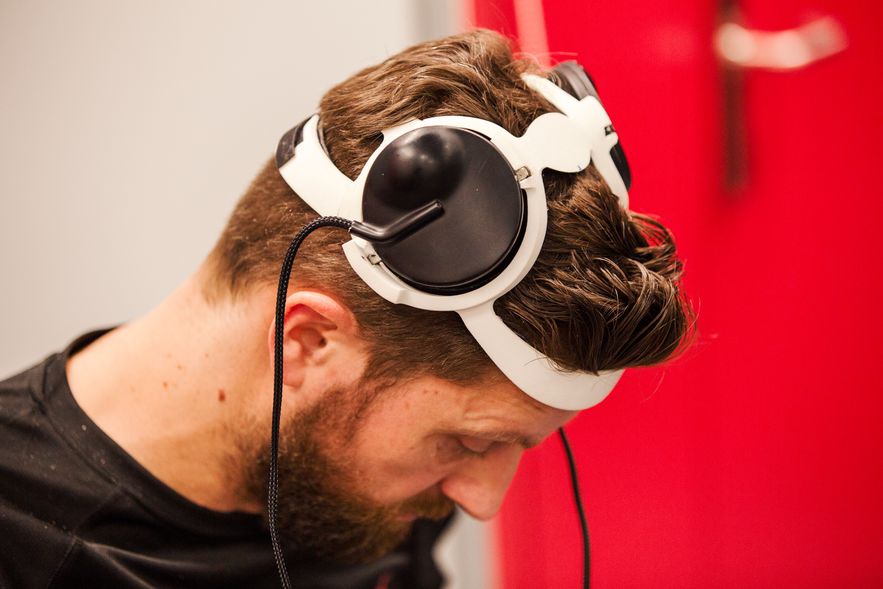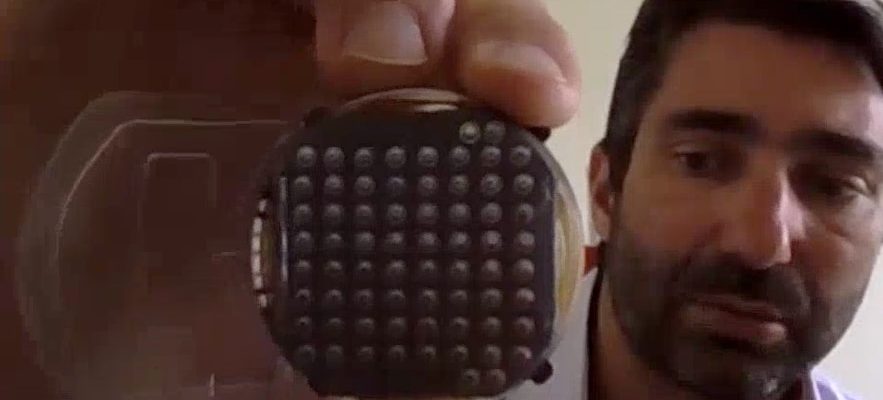For the majority of us, walking seems natural, instinctive. We just have to want it for our legs to carry us. Without us realizing it, our brain sends a command through the spinal cord to the region of the spine that controls leg movement. But if this channel of communication is cut, it causes paralysis. That’s what happened to Gert-Jan Oskam, a 38-year-old Dutchman who became paraplegic after his spine was partially severed after a cycling accident in 2011. And yet Gert-Jan can control his legs by thought and standing, walking, and even climbing some stairs.
No miracle here, but a scientific and medical feat achieved by a Franco-Swiss team of researchers from the Commissariat for Atomic Energy and Alternative Energies (CEA, France), the Federal Polytechnic School of Lausanne (EPFL, Switzerland) , the University of Lausanne (UNIL, Switzerland) and the Center hospitalier universitaire vaudois (CHUV, Switzerland). To restore communication between the brain and the spine, these scientists have succeeded in creating a “digital bridge” thanks to a brain-machine interface, they explain in a study published this Thursday, May 25 in the prestigious journal Nature. A work of several years that required various surgical operations and the development of adaptive artificial intelligence algorithms capable of “reading” Gert-Jan’s thoughts and transcribing them into electrical impulses.
Capturing and decoding brain activity
“Our study describes the association of two technologies: that of the brain-machine interface, developed by the CEA, which makes it possible to capture and decode cerebral activity, in particular that based on movement intentions, and that of spinal cord stimulation, developed by EPFL, CHUV and UNIL”, summarizes Guillaume Charvet, head of the brain-machine program, from his office at the CEA.
The first stage of this work took place in 2018. Jocelyne Bloch, neurosurgeon and professor at CHUV, UNIL and EPFL, then performed an operation to install a neurostimulator in Gert-Jan’s back, itself connected to a 16-electrode field positioned over the region of the spinal cord that controls leg movement. This device was then tested as part of a previous study carried out with researchers from CHUV, EPFL and UNIL during which the scientists sent electrical impulses to their patient’s legs. If this allowed him to walk again, Gert-Jan was still dependent on the device controlled by the researchers. The study published on Thursday marks a major step forward, since it shows how the Dutchman can now control his legs himself thanks to… his brain.
For this, the team based in Switzerland called on Guillaume Charvet, head of the brain-machine program at the CEA. Together, they developed a new approach. This initially involved Jocelyne Bloch performing a craniotomy, a surgical operation consisting of drilling two holes approximately 5 cm in diameter in Gert-Jan’s cranial box, just above the areas of the cortex that control the right leg and left leg. She then deposited two implants developed by the team of Guillaume Charvet.
Equipped with 64 electrodes, these devices can record brain activity related to movement intentions. In other words, their job is to pick up signals from the brain that correspond to the will to move the legs. Non-intrusive, these implants do not penetrate the interior of the cortex, but rest on the dura mater, the membrane that surrounds and protects the brain. “They replace the pieces of bone removed and have small fins that prevent them from pressing on the brain, explains Guillaume Charvet. Unlike intrusive electrodes directly implanted in the cortex, our implants do not cause any risk of injury or damage. ‘infection.” A safer technology, and above all unique in the world, since no other non-invasive implant has as many electrodes as those created by Guillaume Charvet and his team.
Guillaume Charvet, in his CEA office, showing the electrodes of the implant he developed.
© / L’Express/CEA
CEA scientists have also developed a triple function helmet. The first is that, once placed on Gert-Jan’s head, it can power the implants by electrical induction, like some mobile phone chargers. “Thus, the implants do not need batteries, which reduces the risk of failure and increases their lifespan”, adds the French researcher. The second is to retrieve the information recorded by the implants using a wireless protocol similar to Bluetooth. Finally, the helmet makes it possible to transmit this information to a computer, this time thanks to cables.

Gert-Jan equipped with the helmet developed by the CEA to power the implants, record their data and transmit them to a computer.
© / CEA/EFPL/CHUV/UNIL
Once transmitted, the data is processed and decoded in real time by adaptive artificial intelligence algorithms within a maximum of between 300 and 500 milliseconds, an order of magnitude well known to online video game players or people accustomed to test their internet connection. “We have been working with teams of mathematicians and engineers who have been developing these algorithms for more than ten years, underlines Guillaume Charvet. Concretely, when the patient wants to lift his right leg, this generates an electrical activity in his motor cortex. It is decoded in real time by our algorithms which generate movement predictions, like a sort of correspondence table between brain activity and the desired movement”.
Stimulate the spinal cord
The second part of the operation can then begin. Once the movement predictions have been made, they are converted into a stimulation sequence, the fruit of the work of EPFL researchers. These sequences are then sent to the implants placed on the surface of Gert-Jan’s spine so that they generate electrical impulses to activate the leg muscles. “The implants communicate with the spine by very precisely stimulating the areas involved in walking,” said Grégoire Courtine, professor of neurosciences at EPFL, CHUV and UNIL, during a press conference organized on Tuesday. May 23.
As a result, Gert-Jan can control his legs by thought, without outside intervention. The researchers even gave him all the equipment, so he could use the digital bridge at his home in Holland. “A few months ago I was able for the first time to stand up and have a beer with my friends, I don’t know if people realize how lucky that is,” Gert-Jan said during this same press conference. Admittedly, the Dutchman is neither able to sprint nor walk naturally. His steps are hesitant and walking several meters remains difficult. But the finesse of the algorithms developed by the Franco-Swiss team allows him not only to control his hips, legs and ankles, but also to manage the range of motion, and therefore the height of his steps. Enough to allow him to climb stairs or move around in rough terrain.
Regular use of the digital bridge would even have allowed him to recover neurological functions he had lost since his accident, say the scientists, who have noticed improvements in his sensory and motor skills, even when the digital bridge is deactivated. Benefits that could suggest that new nerve connections have formed in the spinal cord, although this remains to be demonstrated.
Smaller, more accessible and reimbursable by social security?
Now, the researchers would like to carry out a new clinical trial aimed at demonstrating the effectiveness of their digital bridge on a patient who has lost the use of his arms and hands. They then intend to perfect their technology, in particular by miniaturizing the computer in order to place it, for example, in a belt, but also the helmet, to integrate it into a cap, or even by removing the cables connected to the computer and by improving the processing speed of the algorithms.
They hope, finally, to be able to reduce development costs. Until considering treating many paralyzed people, with possible reimbursement by health insurance funds? “If this system is offered to a large number of patients, the question of reimbursement of the medical device could be considered. But it is a long process, which notably requires obtaining marketing authorizations, which will take years and will require to conduct clinical trials on many patients. Significant funding will be required”, indicates Guillaume Charvet.
If successful, future opportunities promise to be vast, even far beyond the field of disability. The Franco-Swiss team, for example, had fun testing an interface allowing Gert-Jan to control a drone by thought. “It was strange, a bit like magic”, comments the latter. But the researchers assure it, their objective is not to produce playful devices, nor tools to “enhance the human being”. Impossible, however, to rule out the hypothesis that their technology will one day be used in this way. Which will not fail to raise fascinating ethical questions.
